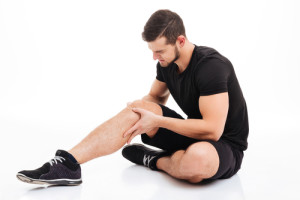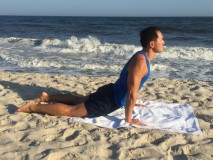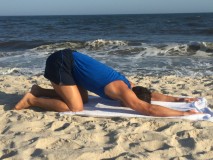 You just had your physical exam with your primary care provider. He/she says you need to raise your “good” cholesterol. But wait, isn’t all cholesterol “bad”? HDL or high density lipoprotein is actually a beneficial form of cholesterol. Higher than average levels can neutralize LDL or low density lipoprotein, which is the main culprit in atherosclerosis (hardening of arteries) which in turn lead to heart attacks and strokes.
You just had your physical exam with your primary care provider. He/she says you need to raise your “good” cholesterol. But wait, isn’t all cholesterol “bad”? HDL or high density lipoprotein is actually a beneficial form of cholesterol. Higher than average levels can neutralize LDL or low density lipoprotein, which is the main culprit in atherosclerosis (hardening of arteries) which in turn lead to heart attacks and strokes.
Here are some effective tips to raise your HDL and keep your blood vessels healthy:
- If you still smoke, stop smoking! There are MANY reasons to stop smoking. This is probably one of the most important. Smoking lowers HDL significantly. Even one cigarette or cigar a week has a negative impact.
- Exercise at least 30 minutes per day, 5 days a week. I recommend doing “Cardio” (ever wonder why we call it cardio? because it’s good for the heart!). Typically, you should get close to your target heart rate during any exercise you do, roughly (220- your age= target heart rate). So that slow walk to the grocery store may not count towards your 30 minutes per day!
- Eat fish 3 times per week. I recommend eating oily fish such as salmon, sea bass, trout, sardines, and tuna. You do want to make sure that the fish you eat are also low in mercury. Tuna should be eaten sparingly.
- Add flax or chia seeds to your oatmeal, yogurt, or salads. They add a nutty taste similar to poppy seeds or sesame seeds, but will boost your HDL. I recommend a tablespoon of each per day.
- If you drink alcohol, drink one glass of red wine per day.
- Lose weight. If you are overweight or obese, try to get to your BMI (Body Mass Index) goal.
- Use olive oil or canola oil in your foods. The Mediterranean diet recommends 4 tablespoons of extra virgin olive oil per day. Add some olive oil to your salads.
- Increase your fruit and vegetable intake. The type of fiber that is found in these foods acts like a sponge in your digestive tract and can help remove any cholesterol that you may have eaten. The recommendation is a minimum of 5 servings total of fruits or vegetables each day. One serving is about the size of your closed fist. I would recommend minimizing the fruits that are highest in sugars such as mangoes, bananas, grapes, and figs. Of course if you are choosing between eating a juicy ripe mango vs. eating a cupcake, I would say the mango would be a delicious and healthier choice!
 I am a big fan of regular exercise. It leads to better cardiovascular health, helps you lose weight, reduces stress, and many many other benefits. As with most things, however, you can overdo it or exercise improperly which can actually lead to health problems.
I am a big fan of regular exercise. It leads to better cardiovascular health, helps you lose weight, reduces stress, and many many other benefits. As with most things, however, you can overdo it or exercise improperly which can actually lead to health problems.
Here are some pointers to getting the most out of your workouts without getting injured.
- Pick a safe sport or form of exercise. I generally advise against full contact sports such as football or rugby. We are finding that repetitive concussions from head trauma (which is inevitable in those sports) can lead to early dementia and conditions such as depression. In fact, there have been many pro-football players who have committed suicide as a result of brain injuries. There are MANY sports to choose from that are safer and can be just as fun. All it takes is one severe injury and your life can be changed forever.
- Learn how to exercise by getting a trainer in that sport. Think back when you learned to drive a car or ride a bicycle. You most certainly needed someone to teach you these skills. Every sport has it’s own techniques and equipment that you need to be familiar with to prevent injury. You must learn these before you get started or you can be seriously injured. Running even requires that you find the right shoe that fits with your style of running and your foot structure.
- Pain is your body’s way of telling you something is wrong. At the gym, I hear some personal trainers telling their clients to “work through the pain.” This is often the worst advice. You should not be in severe pain while exercising. If this occurs, stop immediately. If the pain gets worse, you may need to see a medical professional.
- Wear the appropriate protective gear. Most injuries occur when people don’t wear goggles, helmets or pads. I can’t tell you how many cyclists I see who fell off their bikes and got concussions all because they were not wearing helmets. Think of your head and brain as having the consistency of a watermelon. If you fall from a height of 6 foot on a bicycle while speeding down a road, that is going to cause a significant amount of force on your head.
- Cross train. Running everyday on pavement can be difficult for your knees. In general, we should try to mix it up when it comes to exercise because you want to use different muscle groups and wear them out evenly. In my practice, I see dedicated runners with many injuries, but I almost never see tri-athletes (who run, swim and cycle). I have adapted this to my own routine by following a schedule of running one day, cycling another, and elliptical on the third day, and rowing on the fourth day. I feel this gives a full body workout with adequate rest for each set of muscle groups and joints in between exercises.
- Don’t be a weekend warrior. I recommend regular exercise and avoiding “bursts” of intense exercise. When you begin exercising, gradually increase the intensity and let your body adapt and grow stronger.
Does it seem like everyone you know (maybe even you) is having back problems? Unfortunately, this is becoming one of the most common reasons that people apply for disability. Most types of back pain are caused by recreational, occupational or due to a sedentary lifestyle. One of the most common causes is weakening of the lower back muscles and imbalance with the abdominals. You can think of lower back muscles as pulleys that keep your spine straight. They pull the spine backwards like when you straighten up after tying your shoes. The abdominal muscles do the opposite, they pull you forward. When you are leaning forward while using a laptop computer, tablet, or seated at the dinner table, you will generally use the abdominals. You also lean forward if you have extra weight in the abdomen from obesity or being pregnant. Ever wonder why you see pregnant women standing up now and then, stretching up with their arms and leaning back? Now think about how much in the day you do these “abdominal” curling forward-type positions compared to the “straightening up” movements. As a result, the lower back muscles tend to wither away or in medical terms, “atrophy”. When muscles atrophy they are more susceptible to tears and sprains which can cause severe pain. Our spines are pretty much all going to be “C-shaped” within the next century!
I recommend that we all should pay more attention to our lower back and spinal muscles. Unfortunately, “abs of steel” are more coveted than “spine of steel”. By the way, strengthening your abs till you get a “six pack” but neglecting your back is a sure-fire way to end up with back pain. Strong abs will throw off the balance between the back “flexors” which are mainly the abdominal muscles, and the back “extensors” which are the back muscles.
Here are some stretches that I recommend for everyone who sits at a desk, car, train, or sofa for a combined time of more than 6 hours each day. Hold each pose for 5 seconds. If you can do 10 minutes of these exercises in the morning and the evening, you will notice your posture will be better, you will have less back/neck pain. In my office, I have a yoga mat next to my desk so that if I feel tension in the back, I can immediately stretch out and start feeling better.
Many of my favorite stretches are derived from Yoga, so if you have ever taken a Yoga class you may recognize some of them.
Cobra Pose/Child Pose– For the Cobra pose, hold your head up straight and avoid bending upward. Your eyes should be facing forward. For the Child pose, imagine someone is pulling your head gently and your spine lengthening one by one down to your tailbone.


Cat/Camel Stretch– While on all fours, imagine your belly button hitting the ceiling arching the back (Cat), hold for 5 seconds. Then, imagine your belly button trying to hit the floor (Camel)


Bird Dog/Superman Stretch– For beginners, I would pick the bird dog stretch. With one knee on the ground, lift the other leg up and the opposite arm. Hold for 5 seconds. For the Superman stretch, you will lie on the ground doing the same. If you consistently do the Superman stretch everyday for a few weeks, you may be able to lift all four limbs off at once!


Chicken Pose– This is something you can do at your desk and I recommend doing this at least every hour.Sit up straight in your chair. Raise your hands above your head. Lower them down so your forearms are now at 90 degrees with your shoulder. Turn your hands so your palms face outward as if you were trying to push the walls apart. Think about your shoulder blades coming together as if you are being folded in half, and opening up your chest and lungs. Spread your fingers out like a fan, fully extended. Tilt your head slightly up and push your neck back slightly. Drop your jaw and let it totally relax. Hold this position for a full 10 seconds, taking deep breaths. With each exhale concentrate on loosening the muscles in the neck, lower back, raising your head to the ceiling, and lengthening the spine. If you are concerned about how this might look at the office, you may want to omit the jaw lowering position.


Summer is a great time to catch up on books. Whether you read them on your patio or on the beach, I recommend these 6 books to improve your mind and your health. Here are a selection of my favorites on my bookshelf.
- The Sleep Revolution by Ariana Huffington. This book examines how most of us have lowered the priority of sleep in our lives, the consequences of inadequate sleep, and how we can be happier through improved sleep practices.
- The Miracle of Mindfulness: An Introduction to the Practice of Meditation
by Thich Nhat Hanh. This is a wonderful book about how to incorporate meditation into your life and reduce stress. Though the author is a Buddhist monk from Vietnam, his technique is universal. One of the tips I learned from this book is to stop multitasking. No one truly “multitasks” (try telling that to your boss someday!). Instead, we “toggle” between tasks, shifting our attention from one focus to another. Accordingly, we should focus on our attention on the people directly around us, and not be distracted by out electronic devices. We all know it’s dangerous to drive and text, but it’s just as wise to put the phone away when you want to spend quality time with your loved ones. Live in the moment.
- Grain Brain by Dr. David Perlmutter. Wonder why you don’t feel so great after eating a giant bowl of pasta? There is a scientific basis for this. You may not realize that “carbs” and sugars may also be affecting the way you think.
- Forks Over Knives by Gene Stone. This is the book that started an eating revolution and has many celebrity followers such as former President Bill Clinton. While I have not moved over to a completely plant-based diet, I have seen many patients with cholesterol issues improve their numbers with this lifestyle.
- Dropping Acid: The Reflux Diet Cookbook by Dr. Jamie Kaufman and Jordan Stern. A MUST for anyone with gastroesophageal reflux disease [aka GERD, heartburn, reflux, LPR (laryngopharyngeal reflux), gastritis, indigestion]. Learn what foods can cause your problems and avoid them. I was surprised to learn that not apples are created equal! Granny smith apples are very acidic and can make your heartburn unbearable but Fuji apples do not.
- Being Mortal: Medicine and What Matters in the End by Atul Gawande. We will all grow old and die. But does that mean we must suffer? This is a must-read if you have aging parents. It depicts the current crisis of the US healthcare system as it relates to end-of-life care.
I hear excuses all the time in my office. “I’m too busy to exercise. I don’t have a gym near me.” Last week, I was having a particularly busy day and realized that we all have a tendency to not exercise. Believe it or not, I was tempted to forgo my usual 30 minutes of running even though I have been consistently running almost every day for years. It felt like I had a devil sitting on one shoulder and angel on the other like what you see in cartoons when the main character doesn’t know what to do. On the shoulder with the “Devil”, I was hearing “You don’t have a full 30 minutes, but only a measly 20 minutes, how much of a workout would that be? It won’t be worth it to get changed into workout clothes and shower.” The “Angel” said, “Any amount of exercise is better than nothing. Even if you burn just 100 calories, that’s better in the long run than no extra calories burned today.” Suffice it to say, the Angel won out. I ran just 20 minutes on the treadmill, which actually seemed a lot longer than I remembered 20 minutes to be! I felt great afterwards and didn’t even need a coffee in the afternoon. I also slept very well that night and that led to an even better day.
On a related tangent, I believe there are two vicious cycles that we fall in and out of throughout our lives. One is a vicious cycle of unhealthy habits. What do I mean by this? Let’s say someone is eating something unhealthy, usually something high in fat and sugar. Afterwards, the person will experience a rush in blood sugar followed by a rapid decline which leads to feeling tired. The person will want to rest by sitting on a couch or lying down. Exercise is the last thing on their mind. That night, the person may not sleep so well and the following day he/she may feel more tired. As a quick fix, they may grab something high in sugar to “wake up” with a sugar high and this starts the cycle all over again. Eating unhealthy foods leads to lack of motivation to exercise and poor sleep. Weight gain exacerbates the cycle, by causing more fatigue or even lead to a condition called sleep apnea that severely interrupts sleep leading to daytime sleepiness. Believe it or not, there have been many studies regarding sleep deprivation and insulin resistance leading to higher sugar levels in the blood and possibly leading to early diabetes. Some nutritionists believe concentrated sugars can even be addicting. Just as drug addicts experience withdrawal symptoms when they stop using their drugs, people who consume large amounts of sugar can feel ill if they don’t get their usual “fix” of soda or sweets, leading them to consume even more.
The other vicious cycle is one of healthy habits. Each morning after my run, I eat lunch. I don’t want to put anything bad into my body. I know I just wouldn’t feel right if I ate greasy food. A healthy salad would replenish the potassium, water, and vitamins that would refuel my muscles that I just worked out. I feel more energetic throughout the day and have little desire to reach for unhealthy snacks that could be loaded with sugars and fats. At night, I’ll certainly be able to sleep better and go to bed allowing my body to have enough time to repair. The next morning, I feel refreshed and that allows me to be motivated to exercise, starting the cycle once more.
Sometimes it takes just a little extra push to get healthy. We all need to come to terms with our bodies and have this realization at some point in our lives. Nothing comes easy, but you can encourage that “wellness angel” side and conquer the “unhealthy devil” side. Put reminders of your wellness goals on post-its and scatter them around your home or office. How about putting a post-it with “Workout, Feel Better!” on your door so that when you leave the house you will think about going to the gym later that day. Maybe you want to lose weight so that you can improve your health to be a role model of your kids. How about putting a picture of your kids doing exercise as your lock screen on your smartphone or tablet? Maybe enlist a friend or spouse so that you can motivate each other. There is a law of physics that says, “A body in motion tends to stay in motion, a body at rest tends to stay at rest.” My prescription for good health, keep moving!
 You just had your physical exam with your primary care provider. He/she says you need to raise your “good” cholesterol. But wait, isn’t all cholesterol “bad”? HDL or high density lipoprotein is actually a beneficial form of cholesterol. Higher than average levels can neutralize LDL or low density lipoprotein, which is the main culprit in atherosclerosis (hardening of arteries) which in turn lead to heart attacks and strokes.
You just had your physical exam with your primary care provider. He/she says you need to raise your “good” cholesterol. But wait, isn’t all cholesterol “bad”? HDL or high density lipoprotein is actually a beneficial form of cholesterol. Higher than average levels can neutralize LDL or low density lipoprotein, which is the main culprit in atherosclerosis (hardening of arteries) which in turn lead to heart attacks and strokes.








